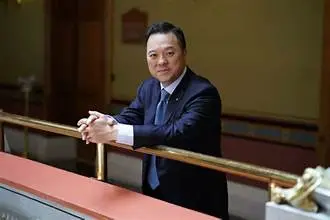
In a moment that harks more to “Home Improvement” than to “The Uninvited,” Jerome Kerner consulted his dead grandfather when he bought his South Salem house.
Kerner and his grandfather toured the house and the grandfather asked the tough questions about heating bills and too-high ceilings, bringing a healthy dose of common sense to the equation. The grandfather was immediately put off by the height of the living room ceiling, Kerner the younger relates, a heat sump as his grandfather saw it from the hereafter. And the windows were too big. The grandfather warned of a frozen tuchas.
Â
“We don”™t give our grandparents enough credit for surviving some very, very tough times,” Kerner says from within the comfortable confines of the house he and his grandfather toured together. “We should be proud of their struggles and emulate them. The tough parts of their stories are their best hour.”
Abraham Kerner was a Ukrainian Jew who emigrated in 1894. “He was always an old man to me and I never really knew him,” Jerome Kerner said. “He never talked of the Ukraine; he never really spoke that much.” His grandfather died in 1959, a year after Brooklyn-born Kerner graduated from Brooklyn ”™s Pratt Institute with a degree in architecture. But as an adult ”“ notably since 1973 when Kerner consciously engaged what he calls his “inner life” ”“ he came to miss his grandfather. He wanted to hear his wisdom, to glean from him the keys to proper living.
More than a passing fancy, gone with a bottle of wine, Kerner as an architect felt he had opened a door into a new and better way of living, at least regarding one”™s space.
The metaphysics available through thought alone led to “archologie” and eventually to “Be It Ever So Humble,” Kerner’s book on the topic with the subtitle “A dialogue at the threshold of family, ancestors, culture and home.” (The publisher is BookSurge.)
Â
Archologie, he says, is “the active practice of remembering the family of origin, the ancestors and the tribe (culture) and the way they created home and safety. It”™s so important to pass along the story of the family, the ancestors, the culture. This is what archologie is all about.”
Â
Thinking about a new house? Really think, would be Kerner”™s advice. Imagine a respected relative and run the floor plan by that relative. Kerner believes there are cultural comfort zones that, if woven into the fabric of a house from the ground up, can positively affect those within. “This is not interior design and it is not feng shui,” he says.
He cites the example of the Dutch, whose urban homes engage the streets via big windows “and you look right in and see someone cleaning the stairs.” Then there is the Middle Easterner, “who prefers a courtyard transition between public and private worlds.” The design of such a home would be tricky: “What makes the Dutch person feel at home could actually make the Middle Easterner feel unsafe.”
Or, as Abraham Kerner admonishes on page 65: “Why so much glass? You will freeze your tuchas.”
A principal of Jerome Kerner + Bond Street Architecture and Design, Kerner is a licensed architect in New York, Connecticut, Massachusetts and New Jersey. His designs include a shopping center in Fairfield County, Conn.; the squash court facility at Westchester Country Club in Rye; Carquest headquarters in Armonk; and the Brewster Sport Center in Southeast, among others. He is currently working on the design of the Fairfield Tennis Center in the town of Fairfield, Conn.
And, he adds: “We do home designs, in particular small homes for clients who want to be involved in the process: both design and interior finishing. We did two last year on lake sites that were very challenging and both successful. By that I mean the clients are pleased and we have remained good friends.”
Kerner”™s wife is Alexis Johnson, a clinical psychologist who practices in South Salem and in Manhattan. Together they have a daughter, Bethany Kerner, 26. Kerner additionally has two sons from a previous marriage: 47-year-old Ariel and 44-year-old Jordan.



















